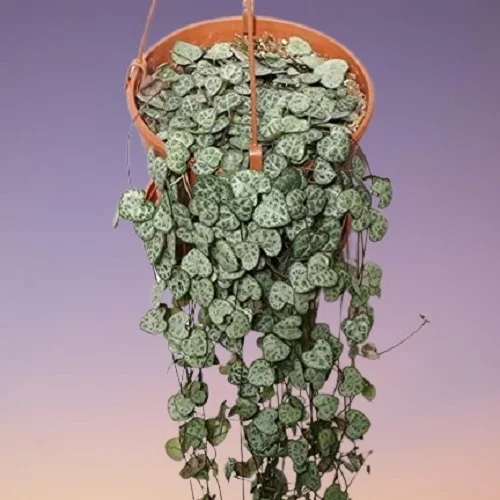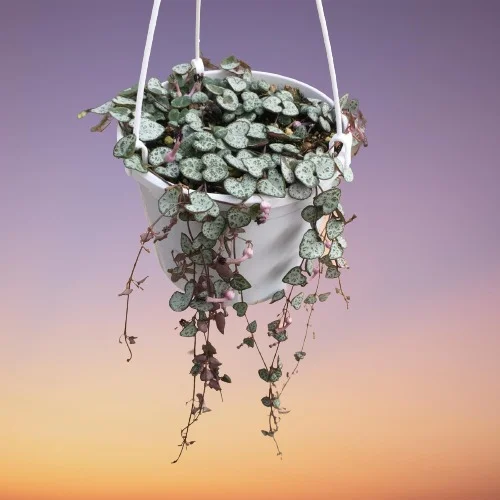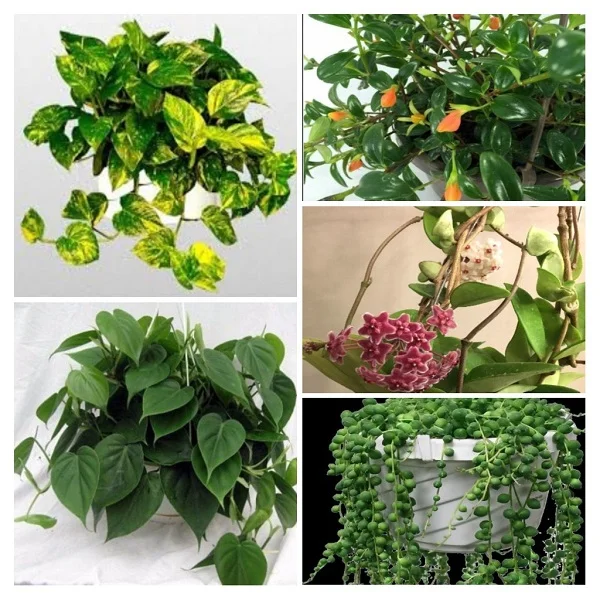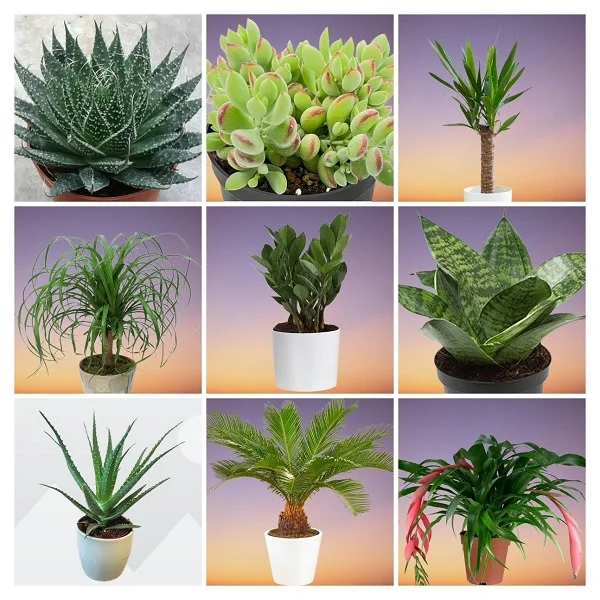String of Hearts Plant (Ceropegia woodii) Indoor Care, Common Problems & Remedies
Some links in this post may be affiliate links
Ceropegia woodii (String of Hearts Plant) requires bright indirect light, average warmth, moderate humidity and moderately moist, rich, well-drained soil coupled with monthly feeding in the growing season.
String of Hearts Plant also called Rosary Vine, Chinese Lantern or Chain of Hearts is among the popular string of plants and bears trailing stems and fleshy, grey-green leaves with an eye-catching marbled pattern.
Rosary Vine is a magnificent easy to grow plant but the heart-shaped leaves are sparsely spaced and the tubular flowers are insignificant.
On account of its beauty emanating from its splendid foliage and ease of care, Chain of Hearts Plant is one of the most popular indoor plants for the home and is ideal for a hanging basket.

Botanical name: Ceropegia woodii
Family: Apocynaceae
Common names: String of Hearts Plant, Rosary Vine, Chinese Lantern, Chain of Hearts
Origin
Ceropegia woodii is native to southern Africa where it is found hanging on rocks.
Size
Rosary Vine's purple-colored, thin stems can grow to 3 feet long and they easily tangle. The plant is one of the best hanging succulent plants for any space.
Flower
Chinese Lantern flowers are about 1 inch long and they have a bulbous base which forms into enclosed beads which gives this plant one of its common name "Rosary Vine".
Varieties
The popular varieties of Ceropegia woodii are;
- Ceropegia woodii variegata (Variegated string of hearts Plant) bears green leaves with cream, pink and silver markings
- Ceropegia woodii 'String of Arrows' (String of arrows Plant) has oval, pointed leaves with silvery variegations
- Ceropegia woodii ‘Orange River’ has green leaves with an orange tint
- Ceropegia woodii 'String of Spades' (String of Spades Plant) bears elongated, dark-green leaves with silvery variegations
- Ceropegia woodii ‘Silver Glory’ whose apple-shaped leaves bear silverish variegation with a dark-green line
- Ceropegia woodii ‘Heartless’ or String of Spades bears bright-green leaves with pink undersides
Is String of Hearts Plant toxic?
No. String of Hearts Plant is not known to be toxic to humans or pets. The plant is safe to grow in the home with kids and pets.
Where to Buy
If you are looking to add String of Hearts Plant to your collection, you may acquire these plants online from Amazon (Link to Amazon).
How to Care for Ceropegia woodii Indoors
To care for Ceropegia woodii indoors, provide bright indirect light (filtered light), warmth of 16-250C, humidity of 50-55% and moderately moist, rich, well-drained, succulents potting soil coupled with monthly feeding during the growing season.
String of Hearts Plant care requires pruning to keep it neat, to discorage pest and disease infestations and to encourage a compact growth. Repotting is only needed when it becomes pot-bound. Keep reading for more on these growing conditions and how to achieve them.

Watering
How often should I water Ceropegia woodii?
Water your Ceropegia woodii liberally in spring and summer while allowing the top 2-3 inches of soil to dry out between waterings. Maintain the soil moderately moist and avoid overwatering to prevent rotting, yellowing and leaf drop.
Significantly reduce watering in fall and winter to keep the soil barely moist as growth is minimal at this time. Do not let the soil dry out completely as it can result in wilting, yellowing and leaf loss.
Use water that is at room temperature to prevent cold shock which can lead to stunted growth and leaf fall. Confirm that the water is chlorine-free to avoid browning of leaf tips and edges.
Ensure that the pot has a drainage hole and the soil is well-draining to prevent waterlogging as it can lead to rotting and eventual death of the plant.
Take care not to wet the foliage during watering to minimize fungal infestations; you may water from the bottom instead.
Light Requirements
How much light does String of Hearts Plant need?
String of Hearts Plant grows best in bright indirect light; a brightly lit or a sunny window is ideal for this plant. Keep it away from direct sunshine as it can lead to scorching (brown marks) of the beautiful leaves.
If the light is not enough, the plant will become leggy with wide spaces between the leaf nodes. Therefore, where the natural lighting is not sufficient, you may grow your Rosary Vine under a grow light to supplement it.
Regularly rotate the pot to ensure that the plant gets adequate light on all sides for even growth.
Temperature & Humidity
Ceropegia woodii thrives in a warmth of 16-250C. Keep it away from sources of drafts as they can cause stunted growth, yellowing, leaf drop and browning of leaf tips and edges.
String of Hearts Plant has no need for extra humidity; average humidity of 50-55% is enough for this plant. Make sure that there is good air circulation to discourage fungal diseases.
Potting Soil
The best soil for String of Hearts Plant should be rich in organic matter, loose and free-draining to prevent it from getting soggy soil. The soil should be loose enough to allow water to drain out fast enough. Most Cactus and succulents mixes are perfect for this plant.
Fertilizer
What is the best fertilizer for String of Hearts Plant?
Feed your String of Hearts Plant monthly with a balanced, liquid fertilizer in spring and summer to promote a lush growth.
Do not feed the plant in fall and winter as growth is minimal and feeding at this time may lead to fertilizer burn and death of the plant.
Repotting
Repot your Ceropegia woodii at the beginning of the growing season (spring to early summer), only when pot-bound as it flourishes when root-bound. Take care not to damage the fragile stems.
Use a pot one size larger than the current one. Ensure that the pot has a drainage hole and the soil is free-draining to prevent waterlogging which can lead to rotting.
A shallow rather than deep pot is preferable because the Chain of Hearts plant has a small root system. Check out these succulents pots on Amazon.
Pruning
Pruning String of Hearts Plant involves regular removal of dead foliage to maintain the plant neat and tidy as well as reduce pest and disease infestations.
To encourage a bushy compact growth and to control growth, regularly pinch off the growing tips. Plant the tips in the pot to fill up the empty spaces for a fuller plant or use them to propagate new plants.
Ceropegia woodii Propagation
Ceropegia woodii (String of Hearts Plant) is best propagated by plant division or from leaf or stem cuttings. The cuttings can be rooted either in water or in soil. They root easily and there is no need for a rooting hormone.
The best time to propagate is at the beginning of the growing season (spring to early summer) when the plant is in active growth to hasten establishment.
Learn how to propagate String of Hearts Plant (Ceropegia woodii) by 5 methods.

Ceropegia woodii Common Problems & Solutions
What are the common problems with Ceropegia woodii?
Ceropegia woodii common problems are leaf fall, yellowing leaves, plant dying, brown leaf tips & edges, dull & lifeless leaves, pests and diseases among others. Keep reading for more on these problems and how to fix them.
Leaf fall
Why are the leaves falling off my String of Hearts Plant?
The leaves on your String of Hearts Plant are falling off due to insufficient light, inconsistent watering, cold water, nutrients deficiency, extreme temperatures, poor quality soil, root-rot, aging, pests or diseases among others.
Check out these 11 Reasons Why String of Hearts Plant is Dropping Leaves & How to Fix Them.
Yellowing leaves
Why are the leaves on my String of Hearts Plant yellowing?
String of Hearts Plant leaves may yellow due to incorrect watering, temperature stress, nutrients deficiency, salts buildup, wrong soil, inadequate light, being pot-bound, pests or diseases among others.
Take a look at these 11 Causes of String of Hearts Plant Yellow Leaves & their Remedies.
Plant dying
Why does my String of Hearts Plant keep dying?
Your String of Hearts Plant is dying due to root-rot disease which is prevalent in soggy soil. The disease is characterized by wilted, discolored leaves, corky swellings under the leaves, yellow and dropping leaves and eventual plant collapse.
How to to bring a String of Hearts Plant back to life?
- Slip the plant out of its pot and inspect the roots.
- Brown-black mushy roots indicate root-rot, trim them off and treat the healthy roots with a copper-based fungicidal solution as indicated by the manufacturer.
- Disinfect the pot with the fungicidal solution or use a fresh pot to repot the plant in fresh, free-draining soil.
- Use a pot that has a drainage hole and a well-draining soil to prevent it from getting soggy.
- Keep the plant dry for some time before resuming watering.
Brown leaf tips & edges
Brown leaf tips and edges on String of Hearts Plant are caused by drafts which cause sudden changes in temperatures. Remove all the damaged leaves and keep the plant away from drafts like windy doors and windows, AC units, hot air vents, hot surfaces among others.
Dull and lifeless leaves
Dull and lifeless leaves on String of Hearts Plant are due to exposure to hot direct sunlight. Shield the plant from hot direct sunlight with a sheer curtain or move it to a more shaded spot.
Pests
Common pests on String of Hearts Plants are spider mites, aphids and scales which are common in overly dry conditions.
How to fix it
- Isolate the affected plant to prevent spread to other plants.
- Treat the infested plant with neem oil and insecticidal soap as per the manufacturer's recommendations.
- Regularly check underneath and between the leaves for these pests and carry out timely control measures.
- Maintain the plant well pruned to discourage pest infestation.
- To minimize pest infestation, set the pot on a wet pebble tray to elevate humidity.
Diseases
String of Hearts Plant is prone to leaf spot disease which is characterized by brown, moist spots on the foliage. It is prevalent in overwet growing conditions and is caused by various bacteria and fungi. In a serious attack the spots can enlarge and merge, killing the whole leaf.
How to fix it
- Remove and burn the affected parts to reduce the risk of spread to the rest of the plants.
- Spray the affected plant with a systemic fungicide as per the manufacturers instructions. Ensure to cover all the parts are completely covered with the fungicidal solution.
- Maintain the plant on the dry side for some time and ensure good air flow.
- Use a pot with a drainage hole and well-draining soil to minimize waterlogging.
You liked it? Share on social media.
Related Content
Amazon Associates Disclosure
Homeplantsguide.com is a participant in the Amazon Services LLC Associates Program, an affiliate advertising program designed to provide a means for sites to earn advertising fees by advertising and linking to amazon.com.





